Are you down to your last freezer-burned backstrap and a can of orange juice concentrate? We’ve got you covered
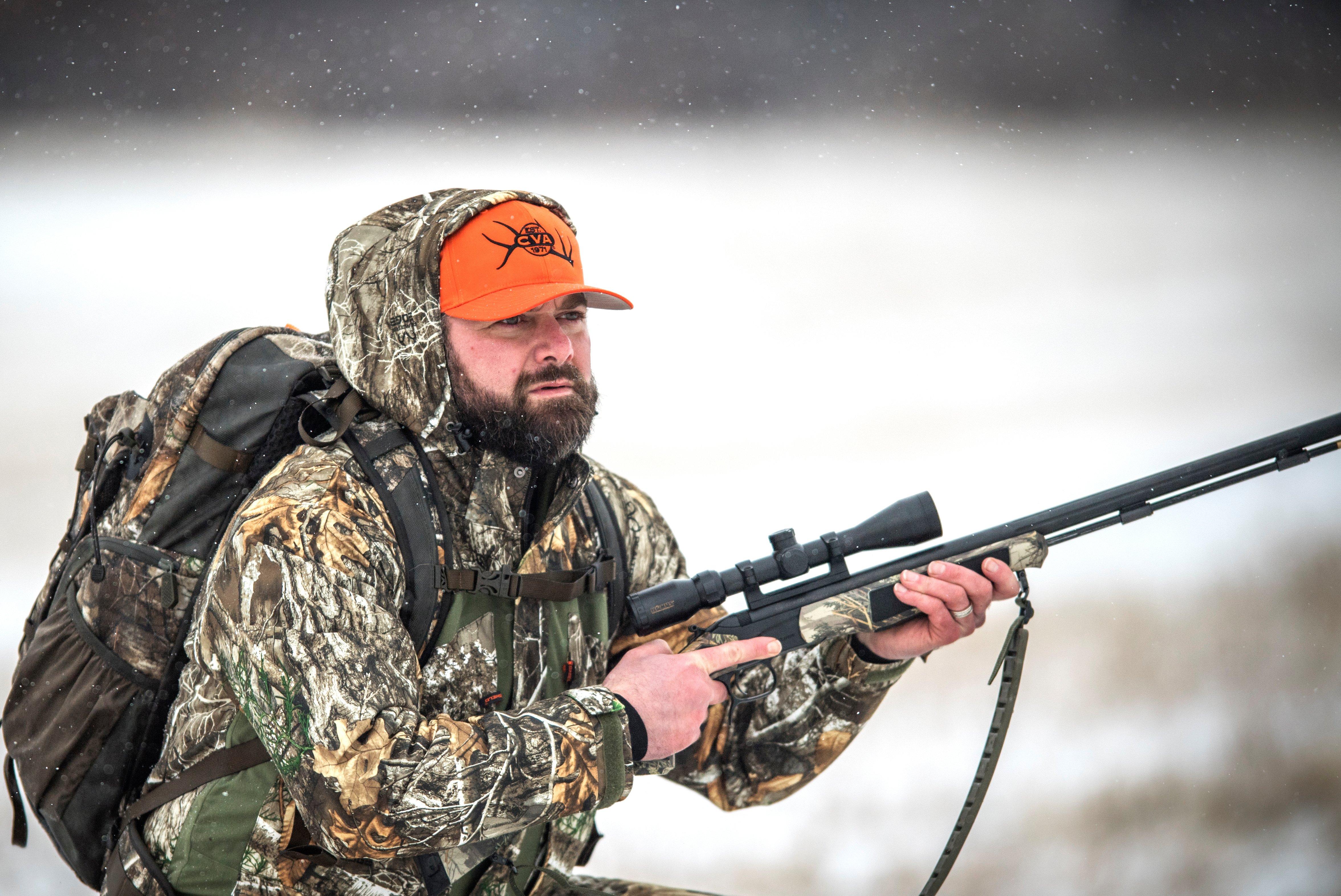
Time’s running out on hunting season, but winter is a great time to stock the freezer with lean wild game. Image by Bill Konway
Hunting season is fading away fast, and your freezer is looking as barren as the snow-driven plains. You didn’t shoot a deer, didn’t feel like waking up early to go duck hunting, nor did you bag a fall turkey. So, what are you going to do about it?
What every hunter still holding tags needs are some surefire, high-yield hunts to make up for their misdeeds this year. Call it a New Year’s resolution, call it plan B, call it whatever you want; you just need to go get some meat and get it fast. The following hunts aren’t hard, and they’re sure better than sitting on the couch watching hunting videos. Here are seven ways to pack the freezer with wild game goodness this January.
1) Go Kick up Some Rabbits
When my friend Dave Hurteau and I finish with our deer hunting obligations we have one critter on our minds: the rabbit. With snow on the ground and limited cover, bunnies congregate in brushy blowdowns, old stone walls, and junkyards. You can’t hunt rabbits every day of the winter, because you won’t always see them. But when the sun is shining, and you have a bit of a warm snap, it’s time to load up your shotgun. You can bring a dog or several, or you can bring a friend. Bunny hunting is best done with help so you can drive rabbits to one another. Look for tracks and droppings in the snow around the aforementioned areas, and start kicking the brush. Before you know it, you’ll have a heavy game bag and a bruised shoulder.
Don’t Miss: Waterfowl Migration Routes are Changing. Here’s What that Means for Hunters.
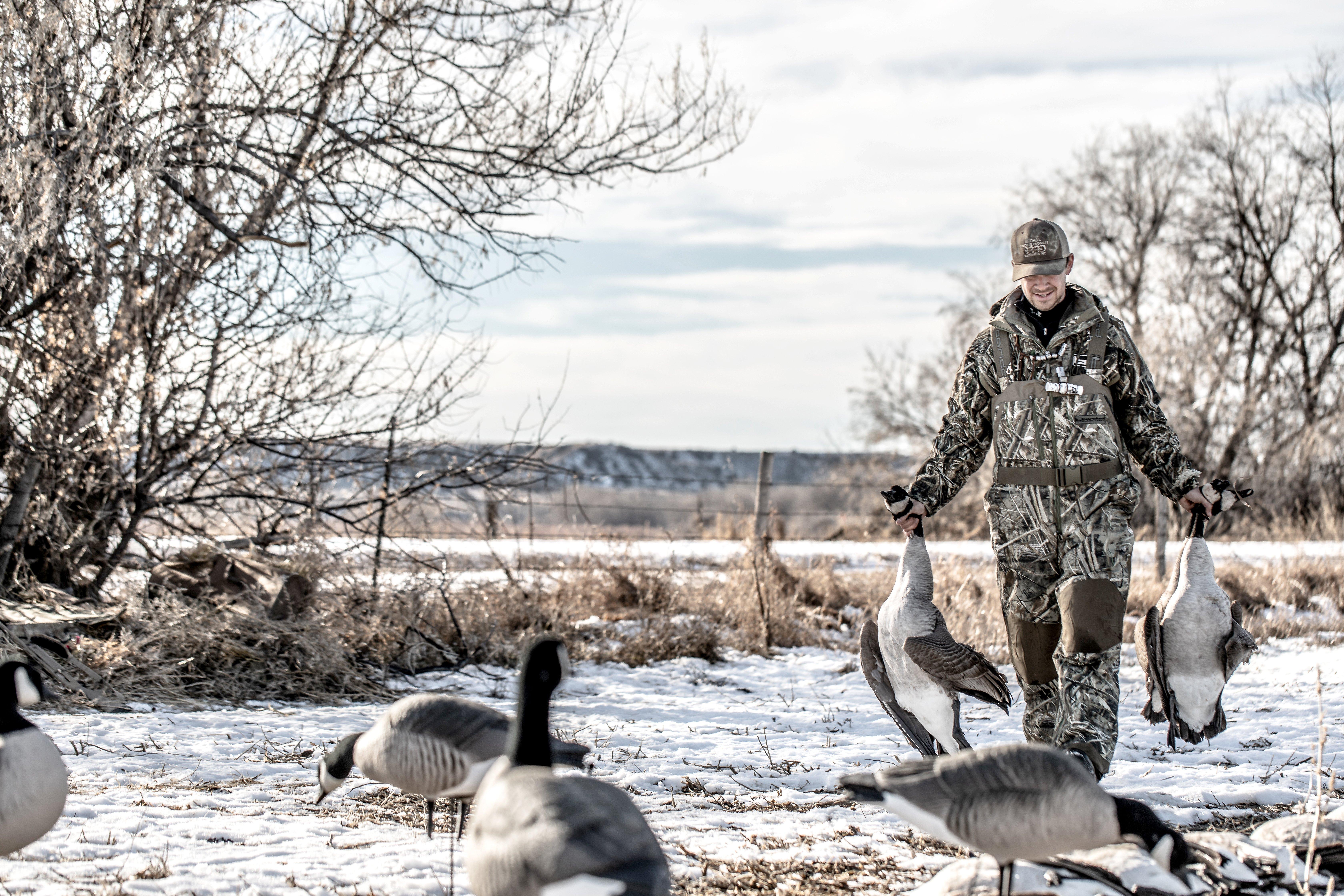
Aside from wild turkeys, no gamebird puts more meat on the table than a big Canada goose. Image by Nick Costas
2) Set Up for Field Geese
Aside from wild turkeys, no gamebird comes close to the amount of meat you’ll get from a fat Canada goose. In some parts of the country, goose season is just starting. Grab a pair of binoculars and get in your truck. My duck hunting buddies and I like to cruise around at midday, glassing farm fields for honkers. When we see something we like, we start knocking on doors.
Most farmers are done deer hunting by now, and they won’t mind if you want to blast away at the passing waterfowl. They also generally don’t like geese. You can put a lot of money into goose decoys, but I’ve found that silhouettes work just fine — plus, they’re easy to carry. Start with two dozen and build your flock from there.
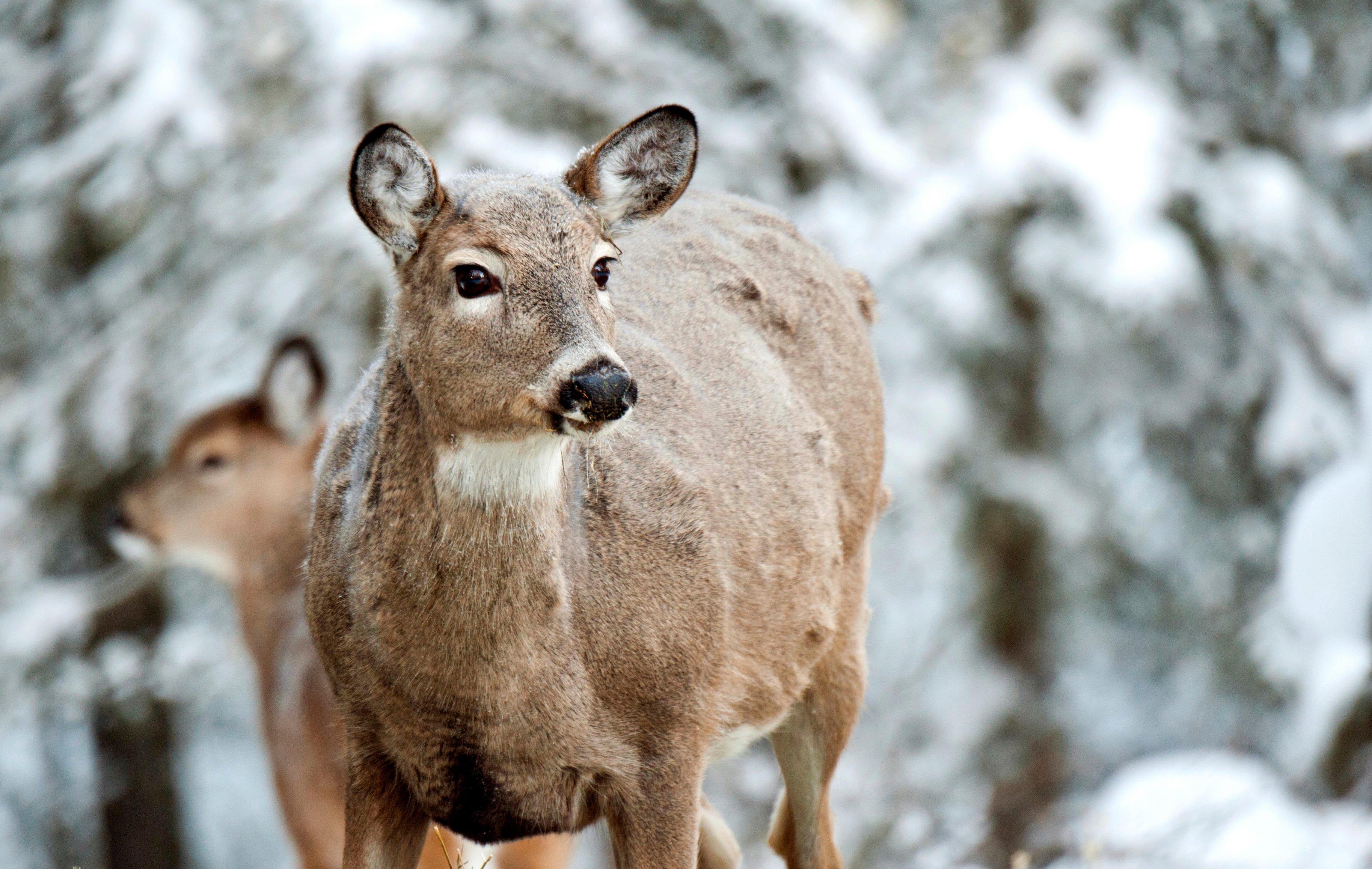
Get out there and fill that doe tag before season’s end. Image by John Hafner
3) Go Shoot a Doe
Everybody knows you can score big on a late-season buck, but you don’t have time to mess around. Unless you’ve been keeping tabs on a Booner, your strategy this January should be geared toward bagging a big, fat doe. Set up a ground blind on a food source or farm field where you’ve been seeing deer chowing down, and hunt afternoons into the evening. If you don’t have agriculture to target, scout by following deer tracks in the snow to find areas in the woods where deer are congregating and feeding. Then, set up a treestand. There’s no shame in bringing a Mr. Buddy heater along for the ride. You’ll want to be able to sit for a while until the deer can come into bow or muzzleloader range.
Don’t Miss: HOW TO SNOW TRACK A BIG WOODS BUCK
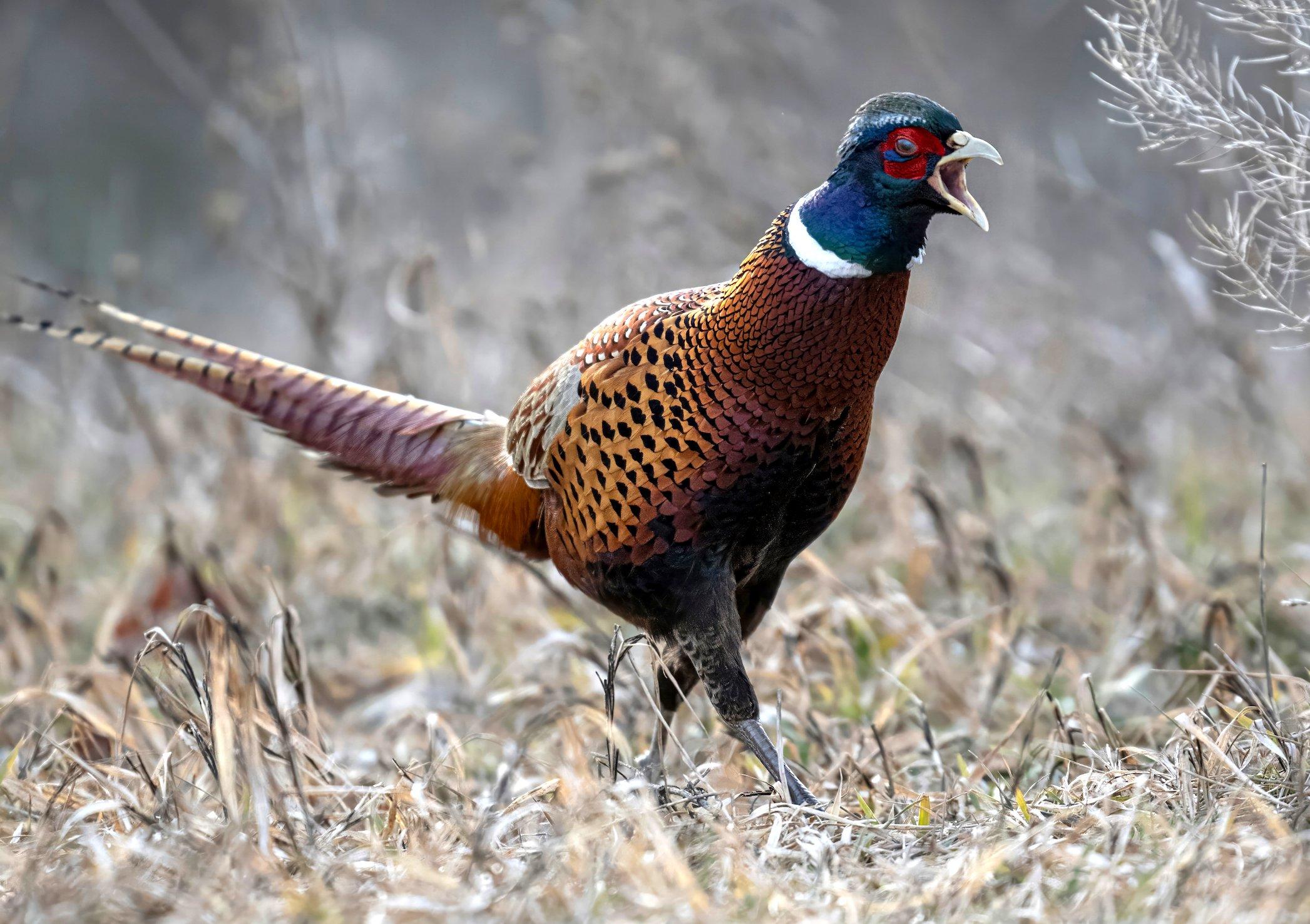
Rooster! Last-second pheasants taste even sweeter. Image by John Hafner
4) Bag a Few Late-Season Pheasants
Pheasant season is pretty much over in most of the Midwest by now, but you can still hunt them in places like Colorado, Iowa, Kansas, and Nebraska. If you live in one of those states, you’re in luck. If you don’t, it’s time to get in the car. Birds this time of year will be taking shelter from heavy wind and bad weather. Look for large and small patches of thicker cover that can hold pheasants. They’ll also be holed up in terrain features like seams or dips in the land. Wetlands are good places to look, too.
Keep in mind that you’re hunting pressured birds during the late season. By now, they’ve seen it all, so you and your dog need to be on your A-game. This isn’t the time for big, noisy drives with loads of people. For heavy-feathered late-season roosters, you’ll also want to use slightly bigger shot. Go with #4s and consider shooting a tighter choke if birds are flushing farther away.
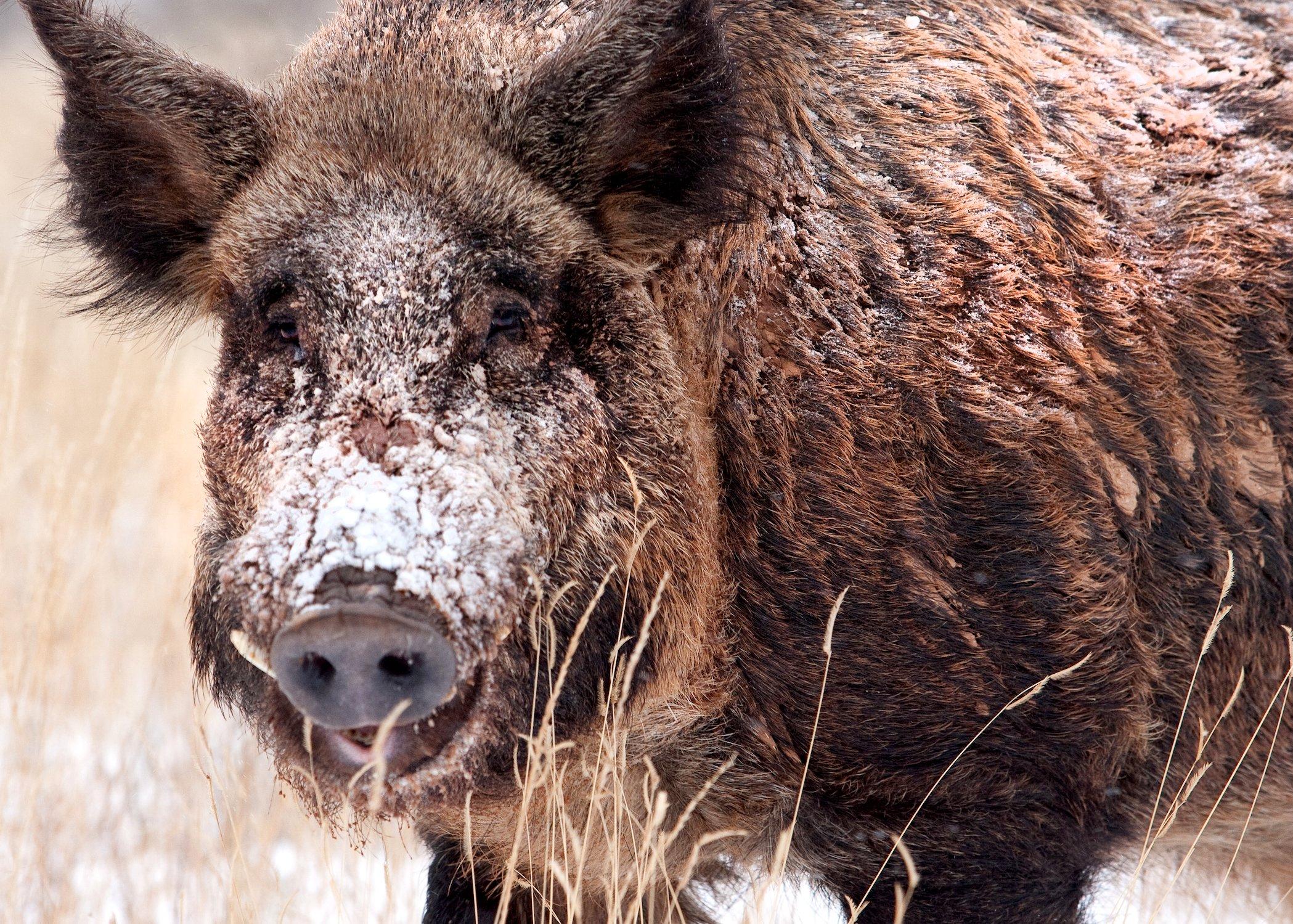
Consider stocking the freezer with some wild pork. Feral hogs are abundant across the South. Image by Russell Graves
5) Hunt Feral Hogs in the South
By now, everybody knows that feral hogs are a problem in the South. Because of that, there are liberal season dates (sometimes none at all) and bag limits. The trick to hunting hogs usually has to do with getting permission to hunt them on private land. But you can find public land opportunities in states like Alabama, Florida, Oklahoma, and Georgia. Just because hogs are a problem, though, doesn’t mean it’s a free-for-all. Each of these states has their own regulations and permits around hog hunting. Some of them don’t allow public-land hog hunting outside of established hunting seasons for other game. Do your research before you go.
6) Remember, There’s Always Texas
If you’re tired of the same old haunts and below-zero temps, you should pack up and head to Texas. You’ll need to bring some cash. Most of the hunts in the Lone Star State for outsiders are pay-to-play. But you’ll have opportunities to hunt a variety of big game, from exotics, like axis deer, to feral hogs. While you’re there, you should also book a quail hunt or two. In January, the season is in full swing.
To get your meat home, you’ll need a big cooler. It’s best to freeze everything before heading back home, and if possible, chill down the cooler, too. If you’re flying, you can get by with some cheap coolers from Wal-Mart. Debone and freeze the meat before packing it into the cooler, then duct-tape the whole thing shut and check it with your luggage.
7) Go Pigeon Hunting
That’s right, pigeons are food, too. They were actually brought to this country by European settlers to be eaten. Today, they’ve gone feral and populate big cities and big farms around the country. I don’t recommend hunting and eating city pigeons, but I wholeheartedly recommend going after their country cousins.
Pigeons decoy just like ducks, and you can make your own pigeon decoys from all the cardboard Amazon boxes that are piling up at your house. Just as with geese, farmers hate pigeons, and they’re usually thrilled if you ask permission to hunt them on their property. When it comes to eating them, pigeons are kind of like a big dove. Poppers are good, and you can grind pigeon breasts with bacon or pork for recipes like breakfast sausage. Just don’t tell your guests they're eating pigeon.
Don’t Miss: KEEP YOUR CAMP KITCHEN KNIVES RAZOR SHARP












